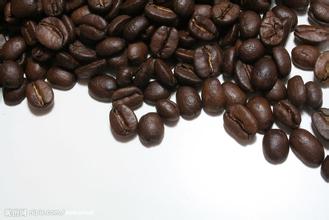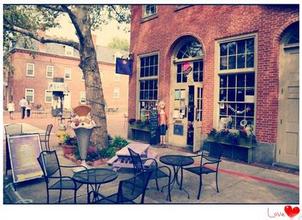Flavor description treatment of elegant and unripe Panamanian coffee beans Variety characteristics and taste manor introduction
Rose summer coffee green beans have a very beautiful blue-green, jade-like warm texture, smell fresh grass, peach flavor, berry flavor and most coffee beans do not have the unique milk sweet flavor, it seems that aroma and taste of this kind of thing is very need to cooperate with association, but the light tea gas is we can obviously feel in order to highlight the characteristics and aroma of this bean, roasting degree to the verge of two explosion, on the verge of two explosion and two explosion one ring is more commonly used roasting degree, This comparison can give play to the characteristics of the beans themselves, too shallow will give off miscellaneous flavor, too deep will lose flower aroma and fruit acid, of course, this also according to the characteristics of coffee beans and roasters for the beans themselves to adjust the floral, tropical fruit, intense sweetness; these are the rose summer has always brought us feeling. Properly baked, they make you feel like sipping the fragrance of a bouquet of flowers. In case you haven't heard the story, Rose Summer, an ancient native from Ethiopia, was brought as a coffee sample into Costa Rica's coffee experimental plantations and distributed to several small farms for small-scale trials.
Not much attention was paid to the rose until the Esmeralda estate in Panama separated it from the rest and won the national coffee championship.
She's so extraordinary, fruity and floral, it's like a Yega Shefi from Ethiopia, Africa, halfway around the world. Of course, that's old news now. A few small farms are getting summer roses, and eager ones want to grow their own.
However, the results vary, depending on weather, soil and altitude, and the taste of this "star" variety does not seem to be the same in different geographical locations. But in the Actanango region, we see typical rosewood characteristics: slender bean shapes, changes in baking, and elegant, ripened flavors in the cup
In the land of Poquet, there is a bean with a particularly high cost performance. And has a very beautiful name-flower butterfly. She has 40% high-quality rosewood pedigree, consisting of three varieties of rosewood, cadura and caduai. She is planted in the Baru volcanic area of Poquet and grows in the volcanic area at an altitude of 1600 meters. The treatment plant adopts fine washing treatment. Panama's special microclimate leads to abundant rainfall in this area and a large temperature difference between day and night. In addition, the volcanic soil unique to volcanic areas, as well as meticulous harvesting and fine treatment, make this coffee in terms of thickness, acid, The floral performance is quite excellent. On the basis of excellent quality, the price of this coffee bean is very close to the people. What makes this coffee bean special is that it consists of three varieties, 40% of which are rose-summer varieties, giving this coffee a distinct rose-summer flavor. According to the information obtained, due to the historical reasons of the estate, in order to pursue yield at that time, the early summer varieties were mixed with the coffee trees of Kadura and Kaduai. In order to facilitate picking, the coffee farmers did not reclassify them, but directly mixed the three varieties. After that, due to the fame of Rose Summer and the high price, the treatment plant began to carry out fine washing treatment for such a coffee bean. Now there are many ways to wash the coffee bean, but generally the coffee fruit is picked and the floating bean is removed. Then the pulp is removed, and then the coffee bean is soaked in the fermentation tank. The enzyme in the water will soften the mucus attached to the endocarp of the coffee bean. The natural yeast will decompose the sugar in the mucus. This process is called fermentation. After fermentation is complete, the coffee beans are moved to the sun to dry. During the drying process, the coffee beans need to be continuously stirred to ensure drying uniformity. Finally, the shelled beans are stored in the warehouse. After the raw beans are placed, they are shelled and bagged. The coffee thus processed has a clean taste, emphasizing bright and lively fruit acids, as well as clear fruit flavors and floral butterfly superiority in variety, plus fine processing methods, if medium and light roasting is used to complete the final flavor trend of this bean. You can certainly give this flower butterfly a great affirmation with its unique floral, southern Asian fruit and berry flavors, as well as honey sweetness and smoothness, aroma and lingering finish.

Important Notice :
前街咖啡 FrontStreet Coffee has moved to new addredd:
FrontStreet Coffee Address: 315,Donghua East Road,GuangZhou
Tel:020 38364473
- Prev

Colombia Huilan Coffee Properties Estate Producing Area Flavor Description Processing Method Variety Introduction
Colombia Huilan Coffee Properties Estate Area Flavor Processing Variety Introduction Valencia Coffee Mill is a small coffee producing family located in Neiva, Huilan Province. This family has a 30-year history of coffee cultivation and processing, and has maintained a relatively low profile attitude, focusing on the fine processing of coffee. Unlike most coffee growers and processors,
- Next

Introduction to the variety manor of Indonesia Manning coffee bean flavor description grinding scale treatment method
Most of the names of coffee in the world are named after countries or producing areas, but Mantenin is not the name of producing area, place or port, so do you know where the name comes from? By the way, Master Cat will talk about where the name Manning comes from. During World War II, during the Japanese occupation of Indonesia, a Japanese soldier often drank local coffee in a local cafe for a long time.
Related
- Detailed explanation of Jadeite planting Land in Panamanian Jadeite Manor introduction to the grading system of Jadeite competitive bidding, Red bid, Green bid and Rose Summer
- Story of Coffee planting in Brenka region of Costa Rica Stonehenge Manor anaerobic heavy honey treatment of flavor mouth
- What's on the barrel of Blue Mountain Coffee beans?
- Can American coffee also pull flowers? How to use hot American style to pull out a good-looking pattern?
- Can you make a cold extract with coffee beans? What is the right proportion for cold-extracted coffee formula?
- Indonesian PWN Gold Mandrine Coffee Origin Features Flavor How to Chong? Mandolin coffee is American.
- A brief introduction to the flavor characteristics of Brazilian yellow bourbon coffee beans
- What is the effect of different water quality on the flavor of cold-extracted coffee? What kind of water is best for brewing coffee?
- Why do you think of Rose Summer whenever you mention Panamanian coffee?
- Introduction to the characteristics of authentic blue mountain coffee bean producing areas? What is the CIB Coffee Authority in Jamaica?

